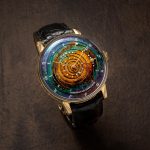The male gaze is the troubling idea that locations girls within the context of male need. Girls are portrayed as sexual objects meant to be bodily fascinating for heterosexual males. This time period was coined by feminist theorist Laura Mulvey in her crucial essay “Visible Pleasure and Narrative Cinema” in 1975. The essay pointed at a well-recognized dynamic in movie. On this frequent incidence, a feminine is displayed as a fantasy and styled provocatively to invoke sturdy visible and erotic affect for a male’s viewing and need. Therefore, the time period “male gaze”. Moreover, bodily attributes of the feminine physique are valued by how a male views her, current purely in her bodily kind and never as a human being.
Along with bodily objectification, one other attribute of male gaze media initiatives a major energy imbalance between women and men. The “damsel in misery” archetype was prevalent in movie and standard in trend campaigns earlier than the 2010s. Feminine characters usually play the helpless sufferer who wanted to be saved by a heroic male, highlighting the stereotypical picture of a fragile feminine and a powerful male. Its juxtaposing portrayals place feminine empowerment secondary to a person’s notion of masculinity.
As shoppers of the media, not solely does the male gaze sexualise and objectify girls, however its impact expands to viewers. As defined by a crucial article by Masterclass, the prevalence of the male gaze situations girls and impressionable women to stick to a patriarchal conception of how they need to look and act. Along with bodily look, male gaze-centric campaigns painting females in subservient roles to fulfill male wishes, displaying a real lack of empowerment. As constant shoppers of media, girls and younger, impressionable women are constricted and belittled by the male-driven beliefs and their shallow illustration of ladies, having the potential to silence them and trigger low vanity. This idea has been rife within the media for so long as we will keep in mind; well-known formulation of scantily clad girls subsequent to a totally clothed man and visible energy imbalance between the genders are nothing new. Nevertheless, in right now’s social local weather, with the rising energy of feminism, emphasis on extra inclusive practices, and Gen Z’s overt rejection of the idea, the male gaze continues however is approached in a extra nuanced and delicate manner.
Learn extra: Luxurious Vogue Manufacturers Unveil Summer season Capsule Collections and Releases
THEN
A Energy Imbalance

Vogue campaigns within the ’90s and early 2000s highlighted to the extent of the male gaze and featured an unrealistic feminine physique picture. Campaigns on this period closely portrayed feminine fashions as submissive characters to be objectified, alluding to the notion that girls ought to act and look in a manner that’s fascinating to males, portraying themselves as shows for males to take a look at. This time additionally was particularly important in perpetuating unrealistic physique picture expectations for girls, with its relentless give attention to the idealised skinny determine. Vogue traits have been primarily influenced by male-driven beliefs of magnificence and desirability, like a skinny determine. Right here, supermodels Naomi Campbell, Christy Turlington and Claudia Mason are actually and figuratively diminished to visible pleasure for males as pictured within the Versace Denims Couture marketing campaign from 1992. Whereas these girls are profitable in their very own rights, the main focus is solely placed on their bodily magnificence, the sweetness beliefs of a prolonged and skinny determine, setting an unrealistic magnificence customary. The importance of the boys trying down on them is all of the extra objectifying and consultant of the imbalanced gender dynamic.
Learn extra: Championing Sports activities and Vogue: Athlete Home Ambassadors within the Race to the 2024 Paris Olympics
Sexist and Stereotypical Portrayals

Pictured above is Dutch firm SuitSupply’s Spring/Summer season 2014 marketing campaign; rightfully, the marketing campaign acquired important backlash for its sexist portrayal of ladies. The imagery completely portrays the essence of the male gaze, the person wearing a full go well with surrounded by bikini-clad girls. The imagery performs to each the sexual wishes and aspirational wishes of a male viewer, perpetuating objectification, dangerous stereotypes and hindered gender equality progress. Meant to promote fits to males, the marketing campaign featured extra girls than their merchandise, specializing in promoting a selected life-style to enchantment to the male gaze.
NOW
Male-targeted Intercourse Enchantment

Even with elevated consciousness of inclusivity with the rise of social media and acceptance of various physique sorts and appears, many trend and wonder commercials proceed to objectify girls extra subtly than earlier than. That is usually finished by way of the portrayal of ladies in a manner that emphasises their bodily attractiveness for the pleasure of the viewer, usually assumed to be male. Excessive-fashion manufacturers usually function campaigns that spotlight the sexual attract of feminine fashions. On this Stella McCartney marketing campaign, actress and mannequin Cara Delevingne poses alone with three baggage overlaying her modesty. The inventive path of the picture, from the provocative pose and backdrop to the dearth of clothes, ends in an outline of male gaze-driven intercourse enchantment.
Learn extra: The Influence of Political Correctness and Commercialisation on Creativity
Oblique Innuendos

Not restricted to trend, many feminine influencers on platforms like Instagram and TikTok nonetheless conform to traditional magnificence requirements that cater to the male gaze, usually specializing in bodily attractiveness and sexuality to garner followers and “fairly privilege”. Whereas social media and digital platforms additional democratise bodily look, permitting extra various voices to problem the male gaze, youthful audiences nonetheless really feel strain to adapt to societal magnificence requirements. Moreover, even magnificence campaigns aimed toward girls nonetheless subtly enchantment to the male gaze. An instance could be the Korean skincare model Laneige’s campaigns starring actress Sydney Sweeny. Right here, the textual content “Bouncy and Agency”, whereas it seems inoffensive, it features a considerably objectifying innuendo when perceived within the context that she is well-known within the media for the eventuated determine. The actress has been extraordinarily profitable prior to now few years in her performing profession, but she is portrayed as a sexual object for male need, even when selling a female-targeted product.
Progress and Empowerment

Fortuitously, progress has been made out of the elevated involvement of females in energy, photographers, and influencers, slowly shifting views. Some trend homes have embraced a extra empowering feminine gaze method like this marketing campaign for Donna Karen titled “In Girls We Belief”. Photographed by legendary feminine photographer Annie Leibovitz and that includes legendary supermodels in Donna Karen Designs, the female-fueled group portrays them as success tales. It celebrates them as females and influential figures. Moreover, whereas the fashions are conventionally stunning, the marketing campaign context empowers females and doesn’t cut back them to visible shows.

Male fragrance campaigns have been infamous for being notably objectifying for girls and portraying them as nothing greater than an adjunct for the male topic within the advert. Now, stark contrasts might be drawn between older adverts like thus Gucci Responsible one starring actor Chris Evans and this Dior Sauvage one starring Johnny Depp. The distinction is within the manufacturers shifting their method to a special male need, that includes movie star males on the forefront with no sexualised feminine, drawing consideration to their success and promoting an aspirational life-style.
The male gaze stays current in trend and wonder, however its affect is evolving and turning into extra delicate. Regardless of the push for range, physique positivity and empowering feminine gaze portrayals, mainstream trend and wonder industries nonetheless predominantly promote conventional magnificence requirements that align with male-dominated beliefs. Conventional magnificence requirements like slim figures, flawless pores and skin, and traditional attractiveness are being challenged and reshaped, however remnants of the male gaze persist in numerous kinds. It is a name to motion; there’s hopeful progress to be made out of ongoing efforts and progress in direction of extra inclusive and various representations influenced by a broader vary of views.
For extra on the newest in trend information and releases, click on right here.






